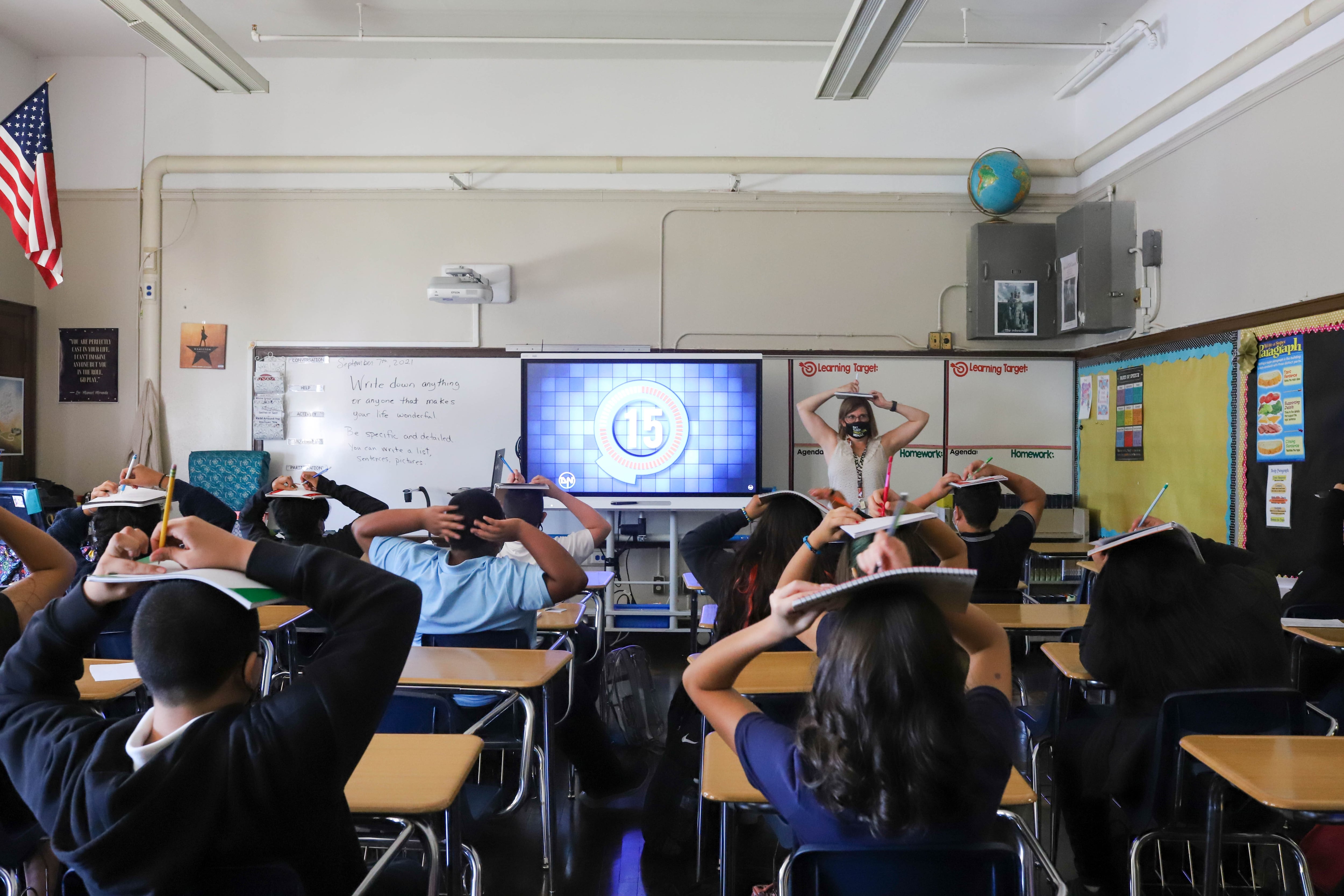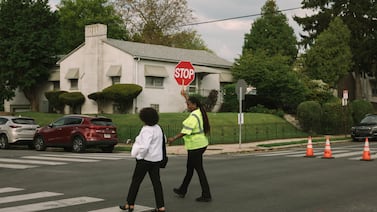Two years of frustration, disruption, and loss have taken their toll on Michigan students, exacerbating a youth mental health crisis that has been building for more than a decade. Michiganders want schools to take action, with educators stepping up to the challenge. And Michigan schools have no shortage of funds on hand to dedicate to solutions.
Yet it’s not clear how far that money will go. Students’ needs are immense, and the pandemic-roiled labor market is limiting districts’ efforts to hire additional staff. At stake is the post-pandemic recovery of Michigan’s youngest residents, not just emotionally but academically.
Interested in learning more? During a March 16 discussion hosted by Chalkbeat Detroit, the Detroit Free Press, and Bridge Michigan, students and educators will discuss their ideas for how Michigan should use funding to better support students.
Read on for the Chalkbeat resource guide for event attendees and anyone who wants to better understand how Michigan school districts are responding to the student mental health crisis. To watch our event in full, go here, or scroll to the bottom of this article.
We hope you find these compiled resources helpful. Do you have any remaining questions? Or story ideas for us? Reach out at det.tips@chalkbeat.org.
What stories should I read about Michigan students and mental health?
- How COVID cash could help Michigan schools tackle a mental health crisis Chalkbeat, March 14, 2022
- How dogs help ease Michigan’s student mental health crisis Chalkbeat, March 14, 2022
- Mental health crisis: Children at breaking point during COVID Michigan Health Watch, Bridge Michigan, June 30, 2021
- A child mental-health fix takes early action, more help. Here are 7 ideas. Michigan Health Watch, Bridge Michigan, July 2, 2021
- Poll: Michigan should use COVID money first for tutoring, mental health Chalkbeat, Jan 28, 2022
How are school districts across Michigan using COVID funds to better support student mental wellbeing?
(For more context, read our story in full.)
In response to the pandemic, the federal government poured a record amount of money into schools — $6 billion in Michigan alone. Chalkbeat, the Detroit Free Press, and Bridge Michigan are collaborating to track where the money is going and how it is helping students.
To report on how schools are using the money to support student mental health, we analyzed state records showing how districts planned to spend their share.
- Lansing Public Schools is creating mental health programs with TRAILS to Wellness, a school-based program based at the University of Michigan. TRAILS provides brief lessons on mental health designed to be delivered to entire classes, student well-being surveys, mental health activities for staff, and suicide protocols.
- In Grand Blanc, a suburb of Flint, the school district plans to hire seven new staffers to work one-on-one with students on social and emotional issues — one for every two elementary buildings, one for each middle school, and one for the high school. Students will be selected to work with the new staffers based on a mental health assessment or referrals by an adult.
- The Kalamazoo district plans to pay 100 teachers an annual stipend to meet with small groups of students in advisory sessions that will focus on the challenges students are facing in life.
- In Grand Rapids, the district plans to cover the cost of additional social workers and therapists.
- Detroit Public Schools Community District will spend $10 million to contract with five organizations to provide mental health services, including therapy and diagnosis, to 3,700 Detroit students with the most severe mental health needs. The district expanded its full-time counseling staff in recent years, but demand for their services became overwhelming during the pandemic.
- In Battle Creek, the district plans to hire a student support coordinator, an administrator who will help schools develop plans to address severe mental health issues among students and work with community agencies to connect students to mental health services outside of school.
- In Flint, the city district contracted with a behavior specialist to address student trauma when classrooms reopened. When classes were virtual, the district hired a social-emotional learning coordinator to work with 9-12 graders who were learning online during the 2020-21 school year.
- In Plainwell, near Kalamazoo, teachers, social workers, and other staffers are set to review district curriculums to bring social-emotional learning into academic lessons. For instance, a math teacher might include instruction on coping with frustration or working with partners to solve challenging problems.
- Chatfield School, in rural southeast Michigan, hired an outside firm to provide mental health workshops to parents, students, and staff.
- North Huron Schools, a small rural district in eastern Michigan, purchased a therapy dog named Chipper who lives with a teacher and spends his days at school. Teachers can refer distressed students to spend time with Chipper.
Who are the panelists at Chalkbeat’s March 16 event, and what resources do they suggest for parents, educators, and students?
The panel will feature:
- Moderators: Koby Levin, Chalkbeat Detroit, and Lily Altavena, Detroit Free Press
- Thyaba Mymuna, a junior at Cousino Senior High School in Warren Consolidated Schools
- Brittyn Benjamin-Kelley, a senior at Cass Technical High School
- Elizabeth Koschmann, executive director of TRAILS (Transforming Research into Action to Improve the Lives of Students)
- Amanda Holiday, Detroit parent and Congress of Communities early childhood program director
Our panelists recommended the following resources:
- Information on youth resources and student-led healing circles from Detroit Area Youth Uniting Michigan (link).
- Resources on student social and emotional learning for parents and teachers from Dearborn Public Schools (link).
- TRAILS programming for school leaders: Tier 1: Universal education and awareness; Tier 2: Early intervention for students with symptoms of anxiety and depression; Tier 3: Suicide risk management for students in crisis.
- TRAILS sample lessons for classroom teachers. There are 20 lessons across four grade bands: K-2, 3-5, 6-8, 9-12.
- For parents and students: A TRAILS student video series that provides an overview of the coping skills for students.
Watch our event in full:
This event is the first in a four-part national Chalkbeat series titled COVID and Mental Health, which seeks to amplify efforts to better support the wellness of students and school staff during this challenging comeback year.
Caroline Bauman connects Chalkbeat journalists with our readers as the community engagement manager and previously reported at Chalkbeat Tennessee. Connect with Caroline at cbauman@chalkbeat.org.
Koby Levin is a reporter for Chalkbeat Detroit covering K-12 schools and early childhood education. Contact Koby at klevin@Chalkbeat.org.






